Blog
How to Write a Product Description in 3 Easy Steps
Before sharing our thoughts on how to write killer product descriptions, we first need to discuss what the traditional definition of a product description is.
What Is a Product Description?
The product description is the place on any product page where the marketer describes the key features and benefits of what it is they’re trying to sell.
This is typically the first copy a buyer reads after getting past the image gallery, product name, and price. Therefore, it holds a great bit of power that needs to be used to its fullest potential if a marketer wants to maximize conversion rates.
But there’s a big problem…
Product Descriptions Are All the Same
Unless you’re selling a truly novel idea (be honest with yourself), you very likely need to revisit and rewrite your product description. Truthfully, even if you have a novel idea you could benefit from revamping this section of your product page.
Let’s talk about why.
I did a Google search for “20 oz tumblers” and opened a few of the results in separate tabs to compare features and prices, just like many shoppers do. Here are the product descriptions I came across:
YETI Rambler® 20 oz Tumbler
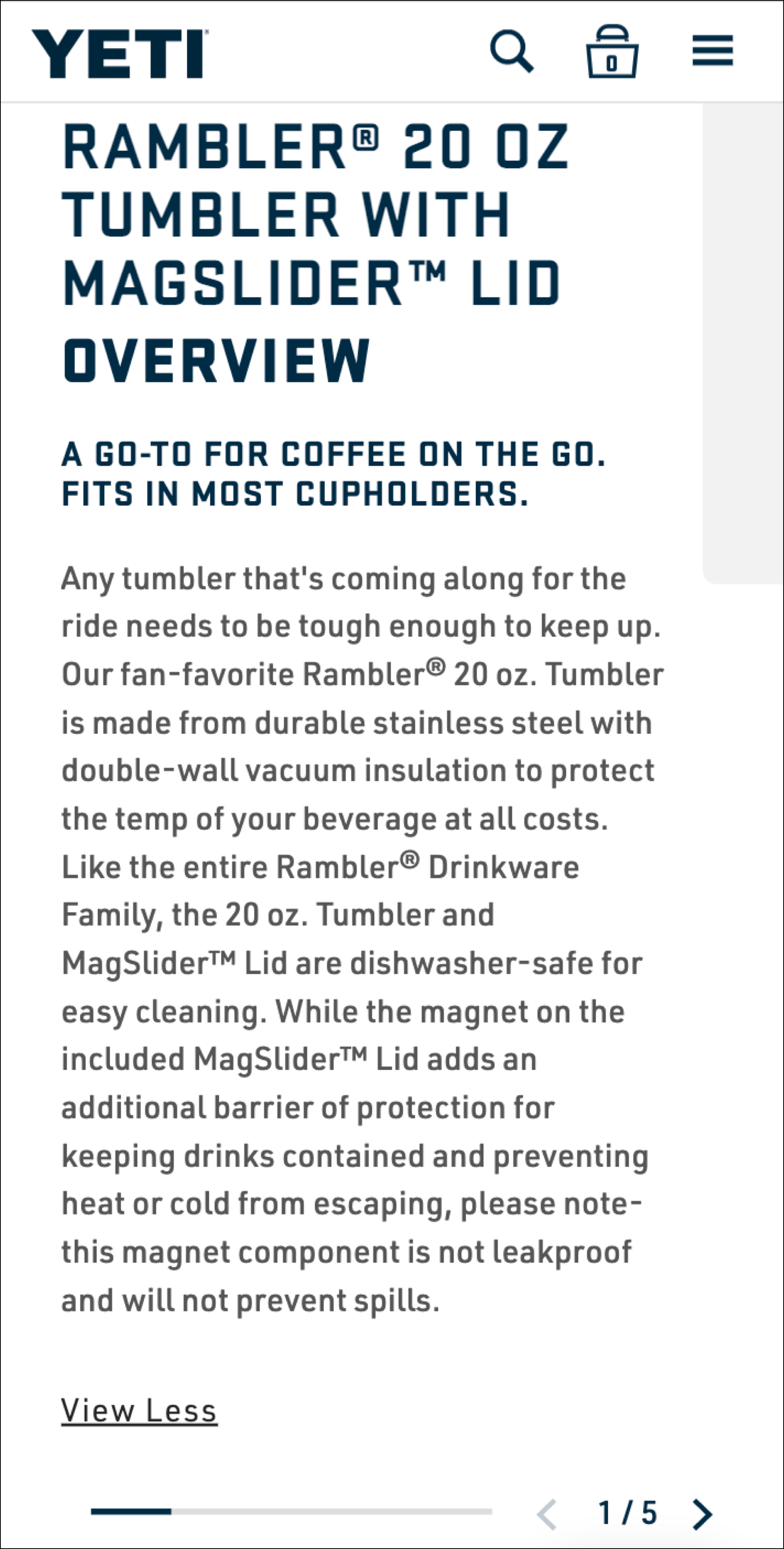
Hydro Flask 20 oz All Around™ Tumbler
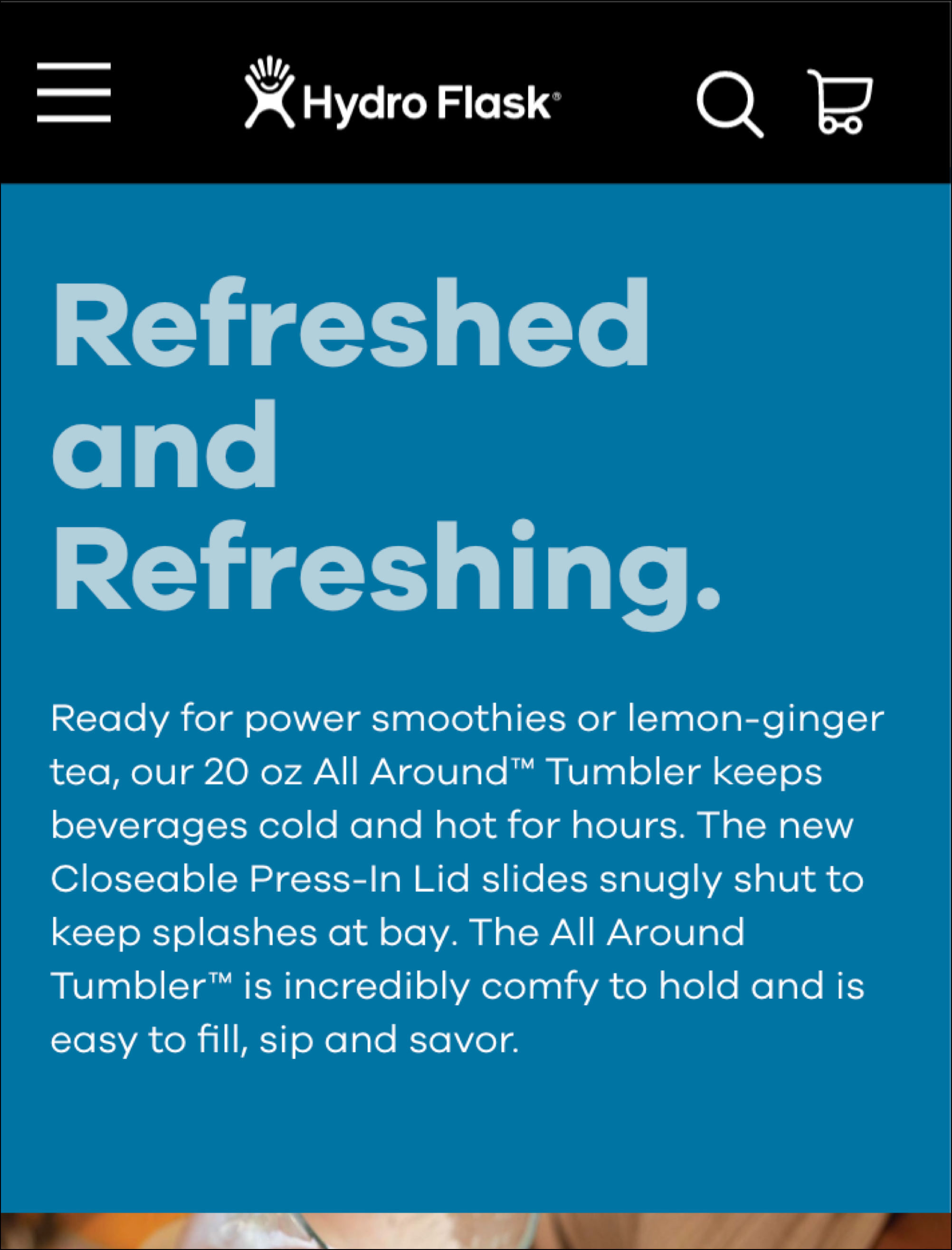
Camelbak Horizon 20 oz Tumbler
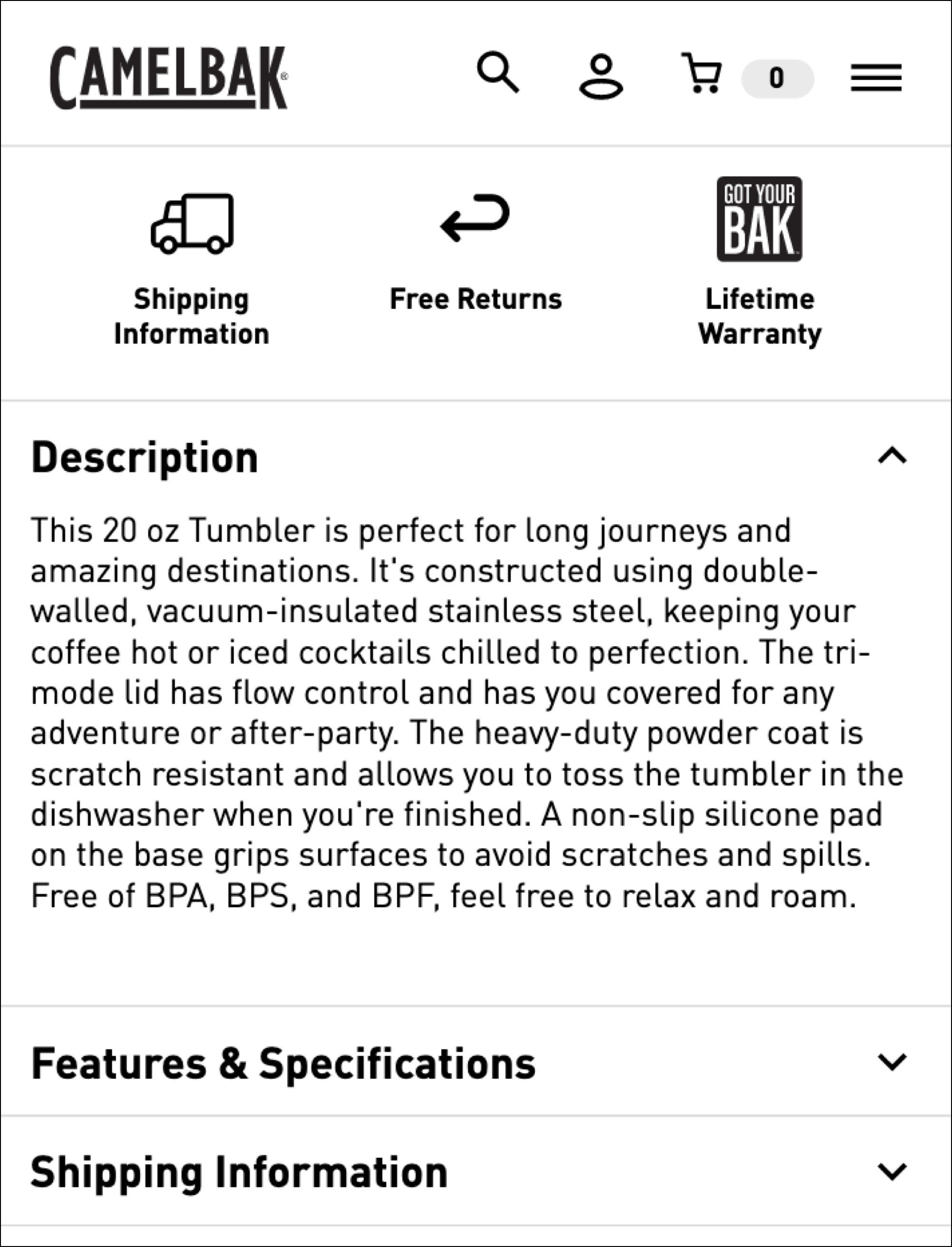
While the design and locations of the product descriptions may be slightly different, the reality is that each of these pages is making similar claims or highlighting features that are virtually indistinguishable from one another.
In other words, the product description isn’t doing enough to differentiate these products in the mind of the shopper.
As a result, the shopper would likely turn to price or brand recognition to make their decision for them. If you’re a smaller brand or have a higher price, this spells bad news for you.
Neglecting to make it clear how you’re different and why your product exists is the biggest mistake a marketer can make on their product page.
But it’s a mistake that can be fixed, and it doesn’t require a redesign, a new ad strategy, or any other complicated project.
How to Write a Product Description that Converts
Step 1: Ask yourself what makes this product different
This is one of the true tests of any copywriter and marketer.
What makes this product different, better, a no-brainer?
For a 20 oz tumbler, the answer likely definitely isn’t the dual-wall vacuum insulation or the ability to fit in most cupholders. Those are features found in essentially all products in this category (effectively making them expectations and not features).
But maybe there is something unique in YETI’s manufacturing process. Perhaps they use a specific type of material that makes it far more durable than any other tumbler. And it took them 24 rounds of testing different material combinations before they found the right one.
Or maybe they’ve fine-tuned their dual-wall vacuum insulation technology to be up to 40% more insulating than competitor tumblers.
Here’s the key takeaway: If your product description doesn’t adequately differentiate the product from competitors, then you’re leaving money on the table.
Step 2: Ask yourself what language is abstract or difficult to fully understand
When I look at the YETI, Hydro Flask, and Camelbak tumbler product descriptions, I get stuck at these phrases: “double-wall vacuum insulation”, “Closeable Press-In Lid”, and “tri-mode flow control”.
A trend I see in marketing is using highly technical or trademarked language to artificially make a product sound more exciting. I’m not saying this isn’t effective — it certainly can be (in fact, a strategy I use all the time is making a simple product sound more advanced, cutting edge, and significant).
But what’s more effective is supplementing that language with less abstract, plain English definitions. For example, YETI could make “double-wall vacuum insulation” a link that, on click, shows a tooltip or lightbox window with a description of what that means and why it’s beneficial:
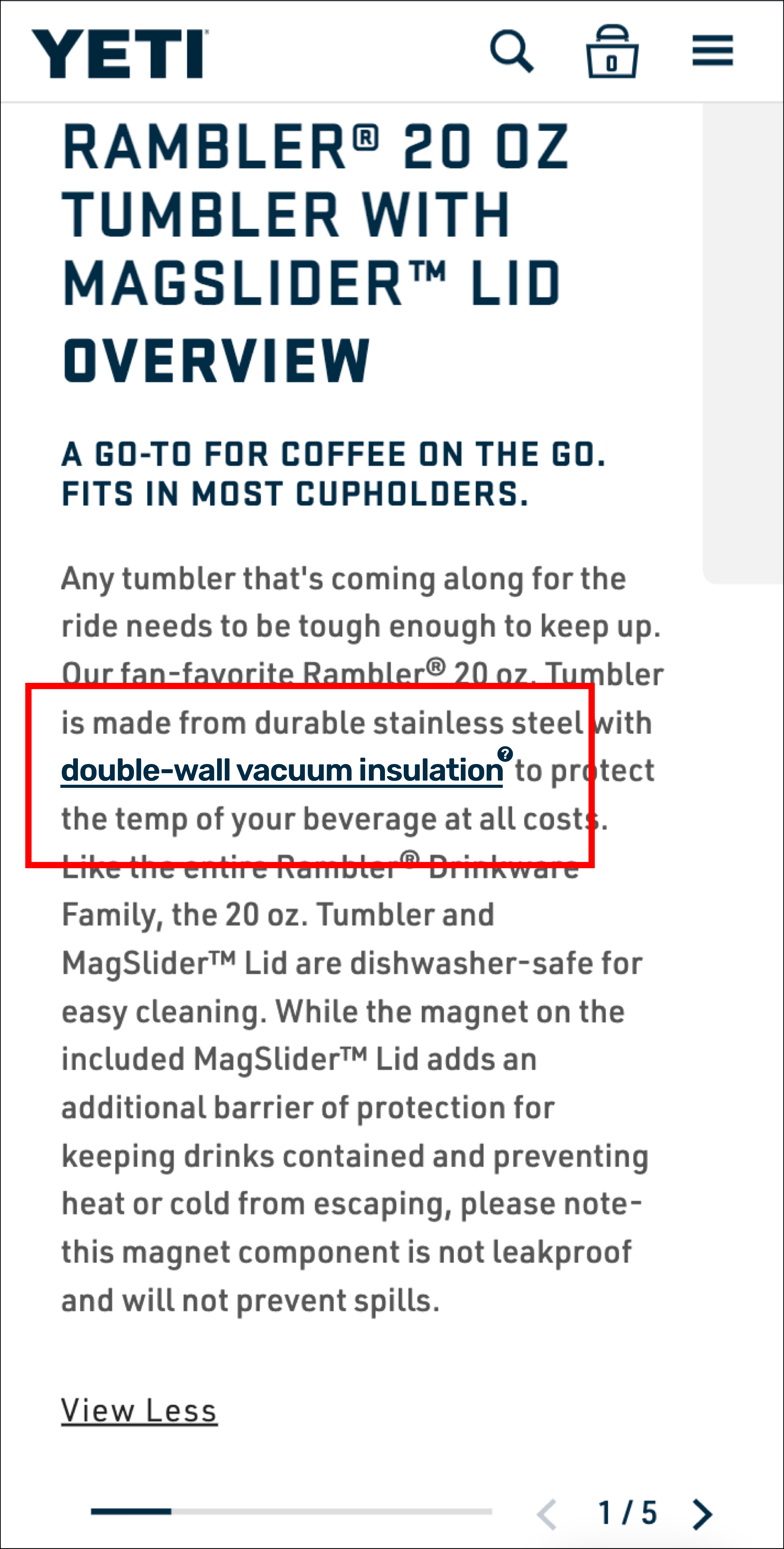
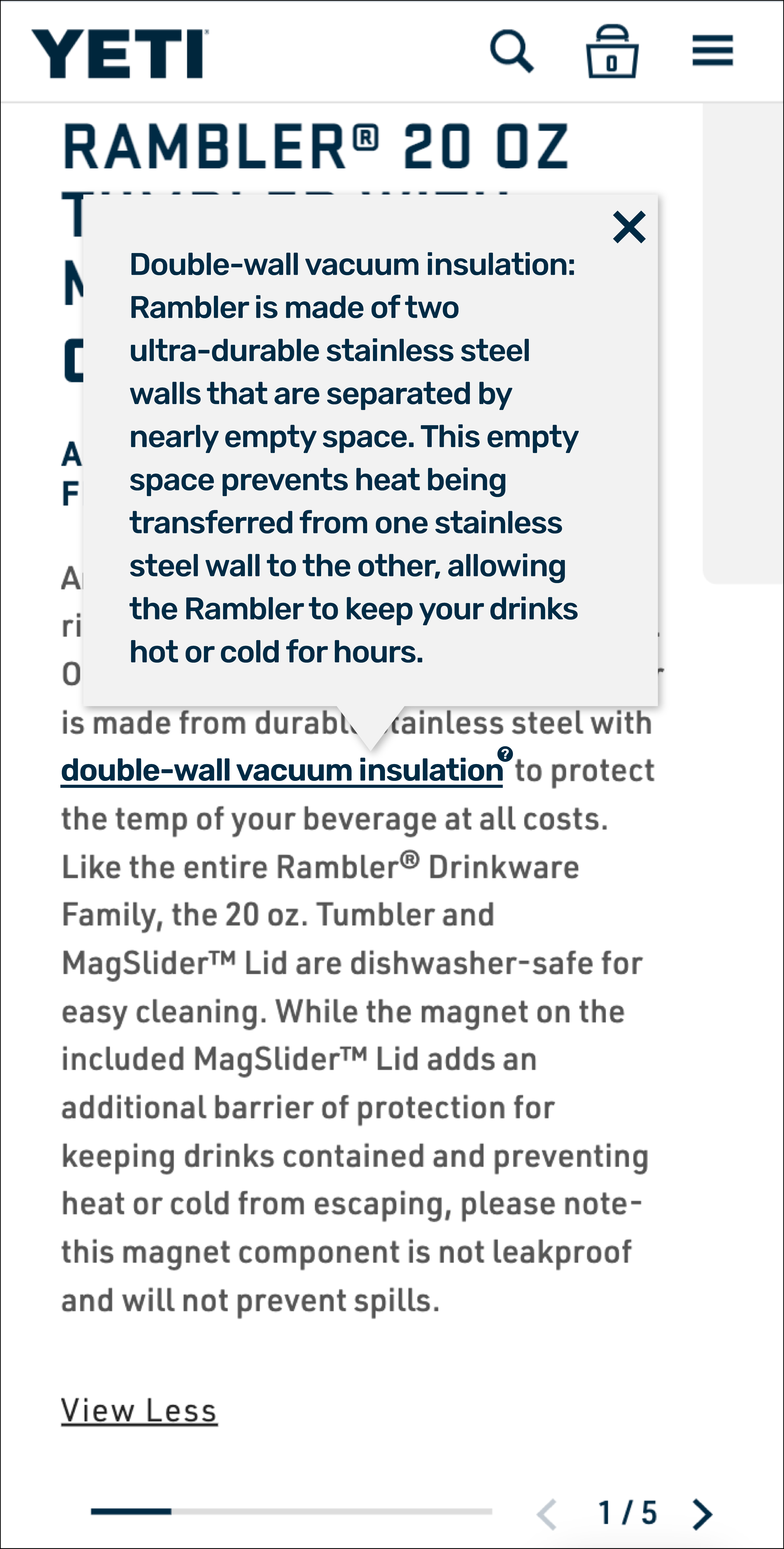
An approach like this has two clear benefits:
- It addresses the buyer’s confusion and gives them more knowledge about the product. In turn this gives them more confidence to buy.
- It keeps the buyer engaged with the copy. If we keep them on the page longer, there’s a higher likelihood they convert.
Step 3: Ask yourself if your product description is easily readable
While a well written product description is incredibly important, it becomes entirely meaningless if it’s not effortlessly inviting the buyer to spend their time to read it.
Let me ask you this: which would you rather read?
This:
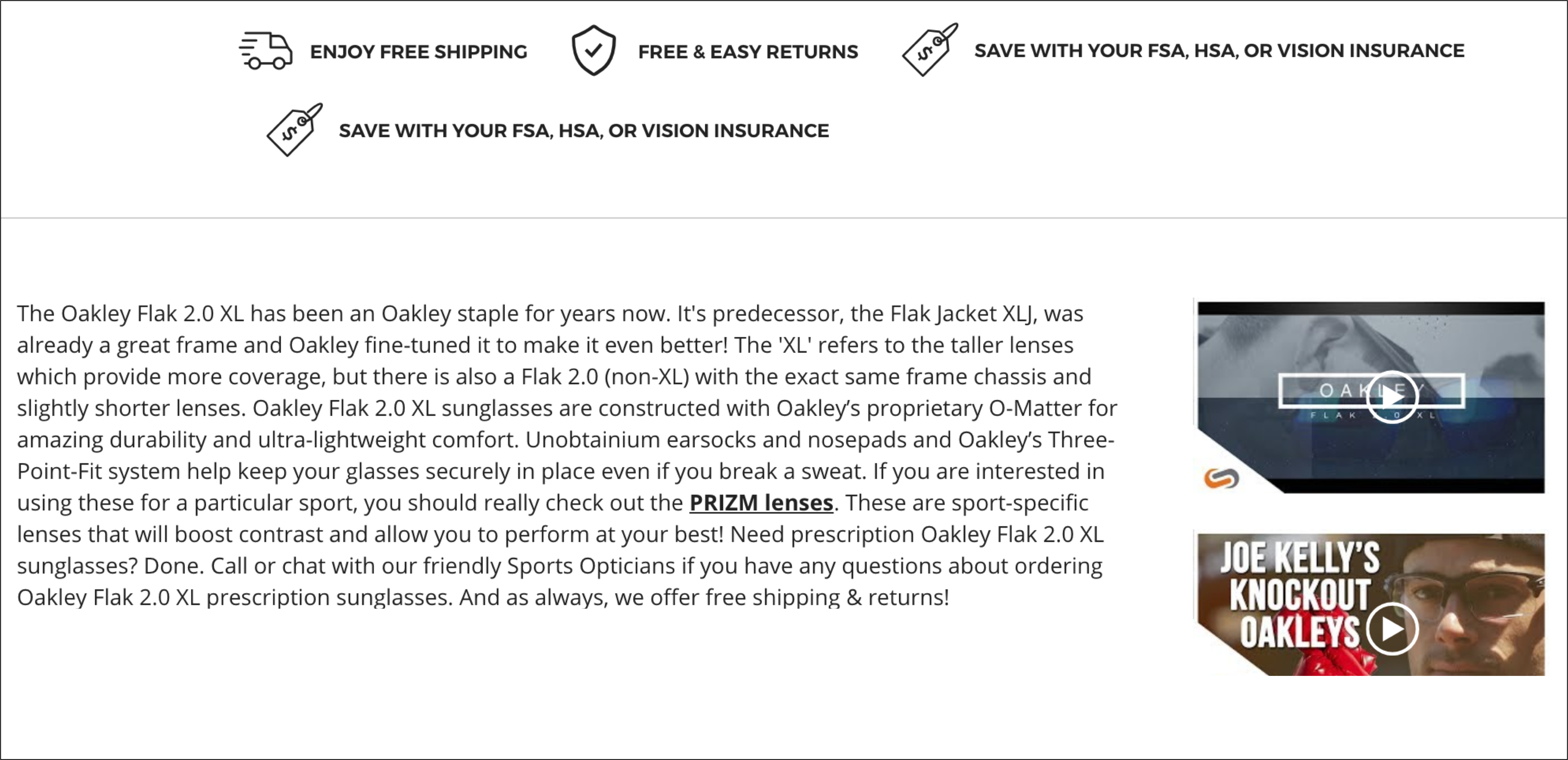
Or this:
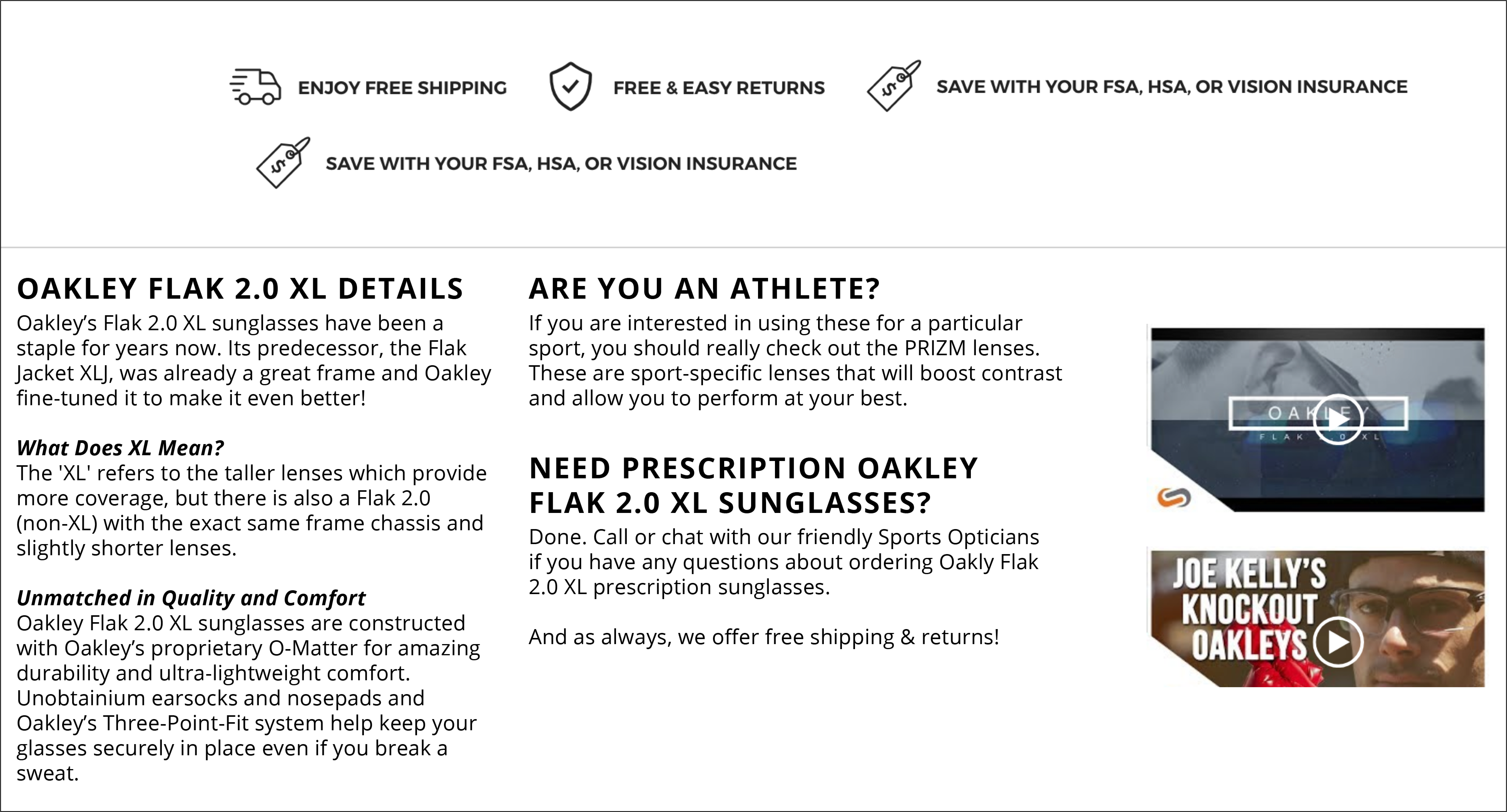
Your vote and my vote don’t matter. Ultimately, it’s the vote of the buyer that is king. I guarantee you that the vast, vast majority of shoppers would respond better to the content in that second image.
That’s because content design is seriously important. All of the effort spent on writing great copy will go to waste if the way in which it’s presented is not considered.
Your product description needs to have a well-defined structure that easily guides the buyer through your sales pitch. Use strong headings; an easily readable font style, color, and size; and proper line and paragraph spacing so the copy has room to breathe.
Test It (Then Test It Again)
Now that you know how to write a product description that actually converts, you need to test multiple iterations of it until you find the right combination of words and selling angles that boost conversion rates.
Then you need to test it again.
But your product description is just scratching the surface. It’s but one door to higher conversions in an entire hallway of other doors.
At the end of that hallway is one very special door, the key to which can be found in our article about a critically important audience on any ecommerce site: Healthy Skeptics.
Healthy skeptics make up maybe 16% of your audience, but they are the most ready to buy — they’re the lowest hanging fruit.
There’s just one hurdle they couldn’t overcome. Maybe a question that was left unanswered. A feature that was confusing.
Whatever it is, we’ll show you how to identify it so you can convert this part of your audience (who already have their wallets halfway out of their pockets): Focus on Converting Healthy Skeptics.



